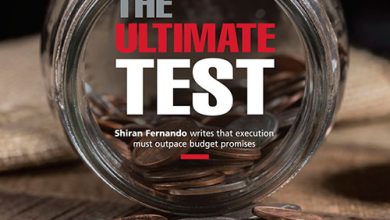THE US DOLLAR
SPOTLIGHT ON THE GREENBACK
Taamara de Silva wonders what the future of the hegemonic US Dollar will be

Is it the beginning of the end of the US Dollar’s hegemony – and with it, the slow death of America’s financial supremacy? When Russia invaded Ukraine in 2022, the US and Western capitals weaponised the dollar through a multitude of sanctions, freezing access to nearly US$ 300 billion in liquid Russian foreign reserves with the aim of “turning the ruble into rubble,” claimed Newsweek.
Russia’s response was to immediately peg the ruble to its mammoth gold reserves and production capacity in a bid to buy time. This allowed the Kremlin to reorient the energy trade away from Europe through its ‘shadow fleet’ of oil tankers, which didn’t have to comply with sanctions. India became a beneficiary of this strategy.
Not only was this a case in point for removing dependency on a single currency, it also led to Russia spearheading the development of a new currency through the Brazil, Russia, India and South Africa (BRICS) grouping.
Historically, under the gold standard, virtually all payments for international trade were made in gold coins, making a reserve currency irrelevant. After World War II, the US Dollar served as the world’s de facto currency for trade and central bank reserves.
The dollar is currently the world’s leading reserve currency, representing 58 percent of the value of foreign reserve holdings worldwide. It also accounts for approximately 88 percent of all forex trading.
Prior to the Ukraine war, all oil was traded in US Dollars. With the introduction of sanctions however, a fifth of the oil trade last year was reportedly made using other currencies.
The dollar’s reign is stable because it is the ‘one-eyed money’ in a land of blind individual competitors such as the euro, yen and yuan. As an economist once quipped, “Europe is a museum, Japan is a nursing home and China is a jail.”
Meanwhile, strong dollar dominance enables the US to sustain large current account deficits and import much more than it earns from exports. This helps to artificially boost living standards and fund its defence budget so the US can control the narrative of international wars.
In the recent past however, BRICS asserted its dominance and now functions as a collective for the Global South to reshape the structure of the world economy. A new currency is in the making, and will be used for cross border trade by Brazil, Russia, India, China and South Africa.
There have been murmurs across foreign capitals urging a dethroning of the dollar since the 1960s. And some financial analysts have pointed to the creation of the euro in 1999 as proof that a BRICS currency is possible.
At its 2023 summit meeting, six countries were invited to become BRICS members – viz. Argentina, Egypt, Ethiopia, Iran, Saudi Arabia and the UAE; and with the exception of Argentina, they all joined the group in January this year.
The addition of Saudi Arabia has handed BRICS+ a major advantage, considering its US$ 100 billion holdings in US Treasury bonds. This has helped increase BRICS’ total holdings in US Treasury bonds to over a trillion dollars.
Meanwhile, a shifting payments landscape has also resulted in a challenge to the US Dollar’s dominance. For instance, the rapid growth of digital currencies such as Bitcoin and Ethereum has reduced reliance on the dollar, both as a mode of transaction and store of value.
Interestingly, the European Union has also shown signs of shifting to EU-based payments independent from the Society for Worldwide Interbank Financial Telecommunication (SWIFT) payment system.
Adding to this, China and Saudi Arabia conducted their first transaction in renminbi (RMB). It is possible that at some time in the future, China will be able to offer so-called ‘petro states’ the ability to trade oil in RMB and hold a greater share of their reserves in the Chinese currency.
Payment systems such as WeChat and Alipay are also gaining traction as a means of facilitating international transactions. All these point to a potential bipolar global reserve currency.
However, it is unlikely that the renminbi will become a real reserve currency unless capital controls are phased out and the exchange rate is made more flexible.
Although the dollar’s share of global trade and reserves is expected to decline further, it will continue to hold sway even though the world will no longer bow down to it.
The greenback’s decline in global trade means a slump in demand for the currency and that will eventually lead to the dollar grinding ever lower against other currencies. Therefore, assets priced in other currencies can easily rise in value in dollar terms.
Those who understand that the dollar’s status quo is changing will scramble to diversify their exposure and trigger a domino effect as they jump on the bandwagon. However, it’s not a question of abandoning the dollar; it simply means that increasing exposure of non-dollar assets is a likely winning strategy.





